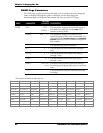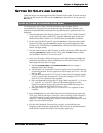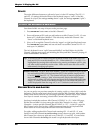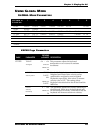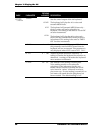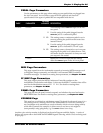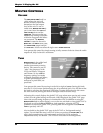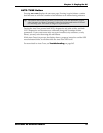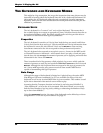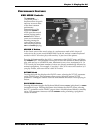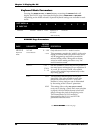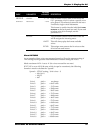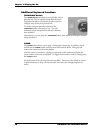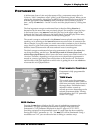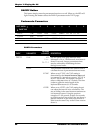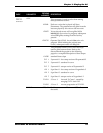
Chapter 2: Playing the A6
54 ANDROMEDA A6 REFERENCE MANUAL
THE KEYBOARD AND KEYBOARD MODES
This might be a big assumption, but we get the impression that some players may be
interested in learning about the keyboard since the A6 is a keyboard instrument. All
joking aside, the A6’s keyboard makes the unit a particularly versatile instrument,
especially when you take into consideration the varied performance modes plus the
addition of portamento.
KEYBOARD SPECS
The A6’s keyboard is a 5-ocatve C-to-C semi-weighted keyboard. This means that it
has a similar design to an organ as opposed to a piano, which has heavier keys due to
its mechanical hammer action. But small weights under each key provide mass so
the action is a little heavier than typical synthesizers.
Properties
The A6’s keyboard is sensitive to Velocity (how hard the keys are struck) and Release
Velocity (how fast the keys are let go). Velocity and Release Velocity information from
the keyboard is sent to the A6’s internal Voices and to
MIDI OUT so that receiving
instruments connected to the A6 can respond to these performance dynamics.
The A6’s keyboard also responds to monophonic pressure – known in the MIDI world
as Channel Pressure or Aftertouch – which means that if you play a chord and press
into the keys, the A6 averages the amount of pressure you’re applying and sends that
information to the Voices and
MIDI OUT.
There is another kind of key pressure called polyphonic key pressure which reads the
amount of pressure on each key and sends the individual amounts to the Voices and
MIDI OUT. Although the A6’s keyboard does not respond to this type of pressure, the
A6’s Voices will respond to poly pressure received from another MIDI device
capable of transmitting this type of pressure.
Note Range
Although the range of the keyboard is limited to 61 physical keys, the entire MIDI
Note Range of 128 notes (numbered 0 to 127) are available. Each key of the A6’s
keyboard as well as any received MIDI Note is given a number. This number is used
by the A6 to determine what musical note or notes to play.
Assuming that the Transpose function (see below) is not being used, Middle C is
“Note Number 60” as far as the A6 is concerned. With that in mind, you can easily
find the Note Number of any key just by adding or subtracting the number of keys
up or down from Middle C.
Using the
TRANSPOSE function, the range of the keyboard can be shifted up or down
using Middle C on the A6 as your reference. See page 58.



